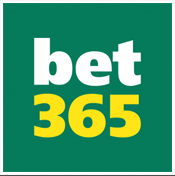The History of Backgammon

Archaeological digs have excavated board games and dice remarkably similar to those of modern backgammon, and it may astonish people to learn that they were dated as far back as 5000 years ago! Many were located on the site of ancient Mesopotamia, buried deep within the tombs of Ur. The two player game that this evolved into is still extremely popular throughout the Middle East and Europe.
The ancient Egyptians were extremely passionate players of board games. Many boards have been excavated for which the rules for which can only be guessed at! Perhaps the most popular Egyptian game was senet. This game commonly resembles a child’s pencil case: a long block of wood bears the carvings of three long rows of ten squares. The objective is to traverse the board as fast as possible.
The ancient Romans hand numerous board games that bear a striking resemblance to backgammon. One of these was simply known as Ludus duodecim scriptorum -"The Game of twelve lines." This featured a board of three rows (much like the Egyptian game of senet), with each row having twelve points.
Progenitors to backgammon have been found as far away as East Asia. Perhaps the most notable one was shuanglu, which was popular during the Southern Song Period of 1127 to 1279. There are ten known varients of this game during its century of use, and features of its gameplay even made their way into Xiangqi, Chinese chess.
Before the eighteenth century English laws (largely at the instigation of the church) prohibited any playing tables. By 1810 however there are reports of backgammon being a popular pastime amongst the English clergy. It is thought that the actual word Backgammon is derived from a conjunction of “back,” and “gamen,” a Middle English word meaning “play” or “game.”
An early French version of Backgammon was Jeux De Tables – Game of Tables. This was immensely popular during the 11th century, and as time went on was actually considered to be a cause of civil unrest and dissolution, to the point that in 1254 King Louis IX passed a law, which prohibited any members of court, or subjects from playing it.
The most recent variant on the traditional Backgammon formula is probably Casino Backgammon. This was first introduced to the public in 2010, when it was offered at the O’Sheas Casino in Las Vegas. In many respects it resembles its progenitor, the traditional backgammon board. It’s table layout resembles one side of the original design, and has six triangular points along what is known as the “Outer Board,” plus another six points lining the home board. These two boards are separated by a familiar feature of backgammon, the bar.
As in the original version of the game, the chosen “shooter” rolls dice, in order to determine the movement of the pieces. The objective of the game is still to move the tokens across the jump bar for the first roll, and then to the outer bar, which is off the board, during successive rolls. The players will initially bet on three possible situations: out, jump and Doubles.
The game Backgammon certainly has a rich and interesting history. It is likely that the game as we know it today is just a small step in its continuum, and it will go through many changes in the future.

 Go To bet365
Go To bet365
 Bet Credits
Bet Credits
